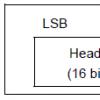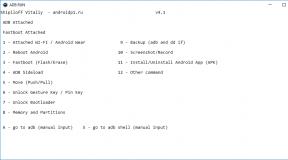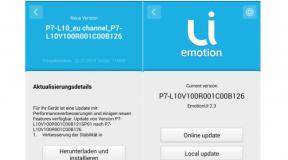Means the diagnosis of ICD 10. What you need to know about the codes of the certificate of incapacity for work? Z61 Problems associated with adverse life events in childhood
The alphanumeric combination that the doctor put in his medical instead of an understandable, detailed diagnosis? And it's not just curiosity - it's just that many people are used to controlling the situation, and the unknown contributes little to this.
International classification of diseases and related health problems 10th revision (ICD10)
The current one was adopted by the 43rd World Health Assembly in 1989. The principle is simple - all diseases and health problems were divided into 21, related diseases and health problems were combined into classes, for example, according to the principle of systems affected by a group of coded diseases.
How to decipher the diagnosis
To make a diagnosis, knowing its ICD10 encoding, you need to understand the principle of the hierarchy of diseases according to this system. Classes in it are designated by capital letters of the Latin alphabet (for example, the capital letter "I" denotes the ninth class of ICD10, which encodes diseases of the circulatory system). This is followed by a two-digit numerical code designating a specific disease of this class (for example, the code "I11" denotes hypertension with a predominant heart disease). This is followed by a third numerical character, separated from the main by a dot, denoting the type of disease or the presence or type of its complications (for example, the code "I11.0" encodes hypertension with a predominant heart disease with congestive heart failure) .4
There are classifiers used in medical institutions for coding and decoding diagnoses. The Russian version is released in three volumes. In the first two volumes, codes and decoding of all diseases are printed, combined into classes, which are arranged in the order of the Latin alphabet. The third volume contains a list of diagnoses in Russian, arranged alphabetically with the ICD code. There are also electronic versions with a search function, with the help of which any person, knowing the ICD10 diagnosis code, can find its decryption, even if he has not even heard of anything like it before. Electronic versions distributed on disks among healthcare professionals, but now it is possible to find them on the Internet, which makes them available to almost everyone.
The use of such a classification of diagnoses greatly simplifies the work of doctors, and for explanations the patient can always contact his attending specialist or independently find the diagnosis code in the classifier.
Hypertension ( arterial hypertension) - constantly increased arterial pressure, which leads to disruption of the structure and functions of the artery and heart. The incidence increases with age. More common in men. Sometimes there is a familial predisposition, more often in African Americans.
Risk factors
Risk factors include stress, alcohol abuse, over-salted food, and excess weight. About 1 in 5 adults have consistently high blood pressure. High pressure helps to stretch the walls of the arteries and heart, damaging them. If untreated, the vessels of the kidneys and eyes are damaged. The higher the blood pressure, the more likely it is to develop such severe complications as, and. Blood pressure in healthy people changes in accordance with activity, it increases during physical activity and decreases in a calm state. Normal level pressure is individual for each person and can increase with increasing age and weight. Blood pressure has two indicators, expressed in millimeters of mercury (mmHg). Have healthy person in a calm state, blood pressure should not exceed 120/80 mm Hg. If a person constantly, even in a calm state, has a pressure not lower than 140/90 mm Hg. , he is diagnosed with hypertension.
Symptoms
At the onset of the disease, hypertension is asymptomatic, but if the pressure is constantly increased, the patient begins to have headaches, dizziness and double vision. In most cases, only the symptoms caused by an increase in pressure are of concern. Over time, they intensify, and by the time the disease is obvious, irreversible changes in organs and arterial vessels are already formed. It is not for nothing that hypertension is called a "silent killer": often people die from or, which were a complete surprise to them.
Recently, programs to promote healthy way life and general medical examination made it possible for many people to diagnose hypertension on early stage. Early diagnosis and advances in treatment can greatly reduce the incidence of strokes and heart attacks in the population.
Diagnostics
Approximately 9 out of 10 hypertensive patients have no obvious causes of the disease. But it is known that lifestyle and genetics make a significant contribution. Hypertension often develops in middle age and in the elderly due to age-related changes in the arteries. High blood pressure is more common in men. Excess weight and alcohol abuse increase the likelihood of developing hypertension, and stress only exacerbates the condition. That is why the incidence rate is so high in developed countries. This condition is rarely seen in countries with low salt intake (this allows it to be considered a risk factor).
The predisposition to hypertension can be hereditary: in America, the disease is more common in African Americans. In rare cases, the cause of hypertension can be identified. It can be caused by kidney disease or hormonal disorders such as or. Certain medications - or - can cause hypertension.
In pregnant women, increased blood pressure can cause preeclampsia and eclampsia, which are life-threatening conditions. The increased blood pressure usually returns to normal after the baby is born.
The likelihood of damage to the kidneys, arteries, and heart increases with the severity, disease, and duration. Damaged arteries are less resistant to, cholesterol plaques form on their walls faster, narrowing the lumen and restricting blood flow.
It develops faster in smokers and people with increased level cholesterol. leads to severe chest pain or. If other arteries are affected, aortic aneurysm or stroke is possible. Hypertension increases the burden on the heart, and, as a result, chronic heart failure develops. The defeat of the arteries of the kidneys ends in chronic renal failure... Hypertension also destroys the retinal arteries.
Blood pressure should be checked regularly every 2 years after age 18. If the blood pressure value is higher than 140/90 mm Hg. , it is necessary to undergo a second examination in a few weeks (some patients are worried at the doctor's appointment, because of this, the pressure rises). The diagnosis of hypertension is made if high blood pressure will be fixed three times in a row. If the blood pressure values are constantly changing, you need to purchase a device for regular blood pressure measurements at home. After the diagnosis is made, it is necessary to undergo tests to identify possible organ damage. For the heart, echo and electrocardiography are performed. An examination is also required blood vessels eyes, additional tests are needed - for example, determining the level of cholesterol in the blood, an increase in which increases the risk of developing myocardial infarction.
Young people or those with severe hypertension need to undergo a complete examination to identify the cause of the hypertension (urine and blood tests and ultrasound examinations to detect kidney disease or hormonal disorders).
Hypertension usually cannot be cured, but the pressure can be controlled. With a slight increase in pressure The best way its decrease is a change in lifestyle. You should reduce your intake of salt and alcohol and keep your weight normal. Stop smoking if the patient smokes. If these measures did not lead to a decrease in pressure, it is necessary to use drug therapy -. These remedies work in different ways, therefore, it is possible to prescribe either one or several drugs. It takes time to choose the right type of medication and its dosage. With development side effects you should immediately inform the doctor so that he makes the appropriate changes.
Some doctors recommend that you regularly measure your blood pressure yourself, this allows you to evaluate the effectiveness of treatment. If the developed hypertension is a consequence of another disease, for example, a hormonal disorder, then its treatment will bring the pressure back to normal.
The prognosis depends on how long and how long the patient's blood pressure is. In most cases, lifestyle changes and drug control of blood pressure can significantly reduce the risk of further complications. The pressure should be monitored throughout life. The risk of complications is greatest in chronic and severe hypertension.
It is provided for the inclusion of many types of codes, while both medical workers and accountants or personnel officers of organizations must enter the codes.
Understanding the codes is not as difficult as it seems at first. you just need to know where to find the information you need.
The sick leave, although small in size, contains a huge amount of information:
- about the patient (personal data);
- about the medical institution that issued the sick leave;
- about the employer;
- about the type of work;
- about the health of the employee;
- about his illness.
Moreover, each item is subdivided into sub-items that cannot be described in a fairly small format.
Encoding is used to compress information while storing it.
Full instructions for the use of codes (with their designations) are contained in Order No. 624n. This document explains in detail:
- what the doctor fills in;
- that of the HR officer or accountant of the employer.
From the part filled in by the doctor, the personnel officer can glean a lot of information about the sick employee of the company, for example:
- whether he is disabled (in this case, it is necessary to formalize the disability in personnel papers and revise the work function);
- is the disease dangerous for the team.
How to read codes?
In the sick leave there is such a line "reason for incapacity for work." The line contains cells for putting down two-digit codes, which are filled in by the doctor.
The codes indicate why the employee is issued sick leave. Here are the reasons and designation codes:
- general disease - 01;
- (outside of work) - 02;
- quarantine (being among infectious patients) - 03;
- or its consequences - 04;
- decree - 05;
- prosthetics in the hospital - 06;
- occupational disease - 07;
- sanatorium treatment - 08;
- - 09;
- poisoning - 10;
- sick leave for a child's illness - 12;
- socially significant disease - 11.
In this case, three-digit additional codes can also be indicated:
- being in a special sanatorium - 017;
- being in a research institute - 019;
- additional maternity - 020;
- in case of a disease resulting from intoxication (alcoholic or otherwise) - 021.
If the cause of the illness with the code 11 is entered in the sick leave, it means that there is a dangerous ailment that can cause critical harm to both the sick person and those around him.
The coding of such diseases takes place on the basis of Decree No. 715, which entered into force at the end of 2014.
Dangerous disease codes
The health of the world's population is taken care of in every state. In order to  to summarize information about the causes of diseases of the population, WHO has developed the ICD - the international classification of diseases.
to summarize information about the causes of diseases of the population, WHO has developed the ICD - the international classification of diseases.
Today the ICD is a document recognized by all countries of the world, in Russia it was adopted for use at the end of the last century. Today, the 10th version (revision) of the ICD is applied.
Information about diseases and their causes is updated every 10 years, its next revision scheduled for 2017... When registering sick leave, not the entire multivolume ICD base is used, but only those inclusions that contain important information about dangerous diseases.
At the same time, the codes themselves are not written in the sick leave, but the code 11 in the line with the cause of the illness should alert.
Dangerous diseases with code designations are divided into 2 types:
- socially significant diseases;
- dangerous to others.
The list of codes is presented in the tables.
Socially significant
Dangerous
The string "other"
A line with this name may contain important information about the employee's disability. You need to pay attention to the codes.
How to read the diagnosis if there is a suspicion of a cancerous tumor is an important question for the patient and his loved ones. The article discusses, firstly, the structure of oncological diagnosis, as well as the rules for reading and understanding it. Let's start with the structure. Cancer diagnosis consists of several components:
- Characteristics of the pathological process.
- Characteristics of the clinical and morphological variant of the disease.
- Localization of the process.
- The stage of the disease, which characterizes the prevalence of the process.
- Characteristic therapeutic effect(indicated in the diagnosis after treatment).
It is imperative to remember that the final diagnosis in oncology, it is placed only after a histological examination of tissue from a neoplasm (biopsy). In other words, only after examining under a microscope a piece of patient tissue from the area where, according to the doctor's assumption, is cancer tumor.
Histological examination allows you to determine the nature of growth (benign or malignant) and the actual morphology of the tumor (i.e. from which tissue is growing), depending on the morphology and subdivide tumors into cancer - tumors from epithelial tissue, sarcoma - tumors connective tissue etc.
It is necessary to know the morphology of the neoplasm to determine the correct tactics of treatment and patient management, to predict the disease, because Tumors with different morphology metastasize in different ways, germinate, etc. Before moving on to examples of explanations of oncological diagnoses, we will consider its main components.
So the first thing is that letters v diagnosis? TNM classification, adopted to describe the anatomical prevalence of a tumor, it operates in three main categories: T (tumor) -c lat. tumor - characterizes the prevalence of the primary tumor, N (nodus) - from lat. node - reflects the state of regional lymph nodes , M (metastasis) - indicates the presence or absence of distant metastases.
Primary tumor (T) within clinical classification characterized by symbols ТX, Т0, Тis, Т1, Т2, ТЗ, Т4.
TX is used when the size and local spread of the tumor cannot be estimated.
T0 - the primary tumor is not detected.
Тis - pre-invasive carcinoma, carcinoma in situ (cancer in situ), intraepithelial form of cancer, the initial stage of the development of a malignant tumor without signs of germination of more than 1 layer.
T1, T2, TK, T4 - designations of the size, nature of growth, relationship with border tissues and (or) organs of the primary tumors... The criteria by which the digital symbols of the T category are determined depend on the localization of the primary tumor, and for certain organs, not only by the size, but also by the degree of its invasiveness (germination).
The state of regional lymph nodes(N) are designated by the categories NX, N0, N1, 2, 3. These are the lymph nodes where metastases will "go" in the first place. Ex. for breast cancer by regional lymph nodes are axillary from the corresponding side.
NX - insufficient data to assess the involvement of regional lymph nodes.
N0 - no clinical signs of metastases in regional lymph nodes. Category 0, defined before the operation on clinical signs or after surgery, based on a visual assessment of the removed specimen, is clarified by the results of a histological examination.
N1, N2, N3 reflect varying degrees lesions by metastases of regional lymph nodes. The criteria for determining the numerical symbols of the category depend on the location of the primary tumor.
Distant metastases (M) are those metastases that appear in other organs and tissues, and not only in regional lymph nodes (when a tumor grows and the tumor destroys its vessels, cancer cells enter the bloodstream and can be spread to almost any organs). They are characterized by categories MX, M0, M1.
MX - insufficient data to determine distant metastases.
M0 - no signs of distant metastases. This category can be clarified and changed if distant metastases are detected during surgical revision or in the process of postmortem examination.
M1 - there are distant metastases. Depending on the localization of metastases, the M1 category can be supplemented with symbols that specify the target of metastasis: PUL. - lungs, OSS - bones, HEP - liver, ВRA - brain, LYМ - lymph nodes, MAR - Bone marrow, PLE - pleura, PER - peritoneum, SKI - skin, OTN - other organs.
Second, what does stage in the diagnosis mean? There are 4 stages in the course of the oncological process:
Stage 1 - the oncological process affects one layer of the organ, for example, the mucous membrane. This stage is also called "cancer in situ" or "cancer in situ". At this stage, the defeat of the regional lymph nodes is absent. There are no metastases.
Stage 2 - the oncological process affects 2 or more layers of the organ. The defeat of regional lymph nodes is absent, there are no distant metastases.
Stage 3 - the tumor invades all the walls of the organ, regional lymph nodes are affected, distant metastases are absent.
Stage 4 - tumor large sizes, affects the entire organ, there is a lesion of regional and distant lymph nodes and metastases to other organs. (In some pathological processes, only 3 stages are distinguished, some stages can be broken down into substages, it depends on the classification of the oncological process adopted for a given organ).
Third, which means clinical group in the diagnosis? Clinical group(in oncology) - a classification unit of dispensary registration of the population in relation to oncological diseases.
1 clinical group - persons with precancerous diseases, actually healthy:
1a - patients with a disease suspicious of a malignant neoplasm (as the final diagnosis is established, they are removed from the register or transferred to other groups);
1b - patients with precancerous diseases;
2 clinical group - persons with proven malignant tumors that are subject to radical treatment;
3 clinical group - persons with proven malignant tumors who have completed radical treatment and are in remission.
4 clinical group - persons with proven malignant tumors who, for one reason or another, are not subject to radical treatment, but are subject to palliative (symptomatic) treatment.
Clinical group must be indicated in the patient's diagnosis. In dynamics, the same patient, depending on the degree of progression of the process and the treatment carried out, can move from one clinical group to another. Clinical group in no way corresponds to the stage of the disease.
So, now we can say with confidence that the structure of the diagnosis, adopted in oncology, allows us to quite accurately understand the situation. In order to understand this more clearly, consider the following examples:
1) Diagnosed with breast cancer. What will this diagnosis look like in medical records?
DS: Cancer of the right breast T4N2M0 Stage III.2 cl. group.
T4- tells us that this is a large tumor with invasion of nearby organs;
N2- indicates that there are metastases to the internal lymph nodes of the mammary gland on the side of the lesion, fixed to each other;
M0- indicates that at the moment there are no signs of distant metastases.
Stage III - tells us that the tumor invades all the walls of the organ, regional lymph nodes are affected, distant metastases are absent;
2 cl. group - tells us that the malignancy of the neoplasm is proven histologically (100%) and the tumor is subject to radical (i.e. complete) removal by surgery.
2) Diagnosed with cancer of the left kidney with metastases to the lungs. What will this diagnosis look like in medical records?
DS: Cancer of the left kidney T3cN2M1 (PUL) stage III. 4kl. group. T3c - due to the significant size of the tumor, the tumor spreads to the inferior vena cava above the diaphragm or grows into its wall;
N2 - metastases in more than one regional lymph node;
M1 (PUL) - there are distant metastases in the lungs.
Stage III - the tumor enters the lymph nodes or goes to the renal vein or inferior vena cava;
4 clinical group
3) Diagnosed with cancer of the right ovary with metastases to the peritoneum. What will the diagnosis look like in medical records?
DS: Cancer of the right ovary T3N2M1 (PER) IIIA stage 4cl. group
T3- The tumor is present in one or both ovaries and cancer cells are present outside the pelvic region.
N2 - metastases in more than one regional lymph node;
M1 (PER) - distant metastases to the peritoneum;
Stage IIIA - spread within the pelvis, with seeding of the peritoneum (many small metastases are scattered along the peritoneum);
4 clinical group- proven malignant tumor, which, for one reason or another, is not subject to radical treatment, but is subject to palliative (symptomatic) treatment.
4) Diagnosed with sarcoma of the left leg. What will the diagnosis look like in medical records?
DS: Osteosarcoma of the lower third of the left fibula T2 Nx M0 IIB stage 2 class group.
T2 - The outbreak extends beyond the natural barrier;
Nx, M0 - no metastases;
Stage IIB - Low-grade (very malignant) tumor. The outbreak extends beyond the natural barrier. Lack of metastases;
2 class group - persons with proven malignancy of the tumor, which are subject to radical (complete removal of the tumor by surgery) treatment.
5) Diagnosed with cancer of the right lung with metastases to the brain. What will the diagnosis look like in medical records?
DS: Bronchoalveolar adenocarcinoma of the right lung T3N2M1 (BRA) stage III. 4kl. group
T3 - a tumor of any size, passing to the chest wall, diaphragm, mediastinal pleura (inner pleura, which is adjacent to the lungs), pericardium (outer shell of the heart); a tumor that does not reach the carina (this is a small protrusion at the site of division of the trachea into 2 main bronchi) by less than 2 cm, but without involvement of the carina, or a tumor with concomitant atelectasis (collapse) or obstructive pneumonia (blockage) of the entire lung;
N2 - there is a lesion of the lymph nodes of the mediastinum on the affected side or bifurcation lymph nodes
(bifurcation is the place of division of the trachea into 2 main bronchi);
M1 (BRA) - there are distant brain metastases.
Stage III - the tumor is more than 6 cm with the transition to the adjacent lobe of the lung or the germination of the adjacent bronchus or main bronchus. Metastases are found in bifurcation, tracheobronchial, paratracheal lymph nodes;
4kl. group - a proven malignant tumor, which, for one reason or another, is not subject to radical treatment, but is subject to palliative (symptomatic) treatment.
You can get more detailed advice by calling the hotline on the website.
What does sick leave mean? With the help of sick leave, sickness, injury, or other physiological problems of the employee are processed. The form is sometimes called in another way - a sheet of temporary disability. It is allowed to be prescribed only by doctors who have passed a special check of the FSS. An employee can count on payments if the form was filled out correctly and submitted to the administration of the enterprise within the prescribed time frame.
For a long time, a single standardized form has been used to fill out a sick leave. In 2011, a reform was made in this area, the forms began to look slightly different, and new rules for filling out were introduced. Disease codes have become strictly mandatory for indication.
Do they write the diagnosis on the sick leave? The diagnosis and the cause of the disability are now indicated using two special numerals. The first is the national designation of the cause (01.02.03), the second is the international form of recording the disease according to the ICD-10 system.
Above all, the reform was carried out to avoid cases of fraudulent payments related to sick leave. That is why all honey. institutions, the forms are received directly through the offices of the FSS. Serial numbers are put on the sheets, so it becomes much easier to track illegal fraud. In addition, new sheets of paper are protected by watermarks, micro-text and some other means.
It is best to fill out the sheet using print media, as well as a black pen. Records must be placed exactly in the borders of cells and frames. Such accuracy is necessary so that the form can be processed by a computer - electronic reading is quite sensitive and demanding. The physician should not cross out, sign, or in any other way modify the completed form.
A sample of a completed sick leave: 
If it is necessary to change the information, then it is worth taking a new sheet. The employer has the right to make mistakes and make corrections in the records, but this is highly undesirable. Corrections are written on the back of the sheet, incorrect data is crossed out.
Then you should sign and date, record the fact of corrections. Also, we advise you to read the article from which you will learn about inaccuracies that the FSS employees will not pay attention to.
Two people fill out the form - the doctor and the employer. The doctor is responsible for completing the 1st and 3rd sections. The employer, in turn, is in favor of the second. It should be borne in mind that the FSS carries out quality control and conducts spot checks. In the future, the Fund plans to switch completely to the electronic system of sick leave, which will further simplify the task of monitoring.
When registering / using sick leave, one should rely on the Tax, Labor and Administrative Code. In addition, Federal Laws N212, N125, N255 are important documents. In any unclear cases, you should contact the FSS department for advice.
On the back of the sheet, you can always find instructions for filling out, as well as an explanation of all codes.
Registration procedure
Three people are involved in the design - a doctor, an employer and an employee. An employee who is sick is sent to a medical facility. The doctor must diagnose the patient's illness and health condition. On its basis, the physician determines the period of the sick leave and enters it into the form. For this, the corresponding unified codes are used (detailed decoding below). Then he indicates the following information about the patient:
- Date of Birth;
- The name of the enterprise - according to the patient, no special documents are required. If the employer is an individual entrepreneur, then enter the full name of the individual. person-employer.
The doctor must also indicate the name, address and registration number of his medical institution... After that, the sheet should be signed and stamped. If the attending physician is engaged in private practice, then he similarly indicates his full name and register. room.
The employee takes the form filled out by the doctor to the administration at the place of work. The employer fills in the information regarding the calculation of payments and information about his company: 
- Organization name - 29 cells are highlighted, one blank cell must be left between words;
- Type of work (main or part-time);
- Registration number in the FSS (enterprise);
- Subordination code;
- Employee number (identification);
- Fear. room;
- Payment terms;
- Fear. employee experience;
- Wednesday earnings;
- Name of chapters. accountant and company manager;
- Amount of payments - indicate three amounts: from the employer, from the Fund and the total amount (due to the employee).
In addition, the data required for the tax office is recorded. Every year, tax reports (2-NDFL) must be drawn up for all employees. On sick leave, the tax code is always 2300. The benefit is not taxed, although it is formally classified as income. A 2-NDFL certificate is sometimes required by an employee in order to receive a loan, it may be necessary at a new workplace. The employee always has the opportunity to check the correctness of payments.
Decoding of the fields in the sick leave: 
The employee is also a participant in the registration process, but he practically does not fill out anything. He is only required to consult a doctor in a timely manner, to receive a certificate of incapacity for work. Then it is necessary (in compliance with the deadlines) to provide the completed form at the place of work.
Codes
Special digital codes are used to record information describing the nature (diagnosis, disease, cause) and duration of the disability. There are two-digit and three-digit codes (starting from zero). With the help of such a flexible system, all causes of disability / sick leave are coded. There are 15 main reasons for disability(diseases), let's look at what the codes on the sick leave mean, what disease and diagnosis is hidden behind it, and let's get down to deciphering them: 
- "01" - disease, the most common case, especially during influenza epidemics;
- "02" - household injury, that is, damage to the body, received not at work / workplace;
- "03" - quarantine, denotes the need for quarantine, typical for infectious diseases, for example, tuberculosis;
- "04" - work injury but the correct name would be "industrial accident";
- "05" - the onset of incapacity for work due to BiR (pregnancy and childbirth);
- "06" - prosthetics, which (for medical reasons) can only be performed in a hospital;
- "07" - prof. disease, as well as exacerbation of prof. diseases, especially typical for industries with harmful conditions;
- "08" - medical procedures in hospitals and sanatoriums;
- "09" - incapacity for work due to the need to take care of a sick family member (for example, a disabled person);
- "10" - poisoning, as well as other conditions;
- "11" - a disease from the list of social. significant diseases, the list was approved by Government Decree N715. These include, in particular, tuberculosis, hepatitis, HIV, diabetes, oncology;
- "12" - the reason is the illness of a child under 7 years old, the need for additional care;
- "13" - caring for a disabled child;
- "14" - oncological disease in a child or post-vaccination complication;
- "15" - HIV infection in a child.
Items "14" and "15" are noted in the form only with the consent of the insured person (employee).
After the code "15" three-digit designations begin (the first is "017"), they are indicated next to the above two-digit designations. They are inherently complementary, give more detail if necessary, and they begin with the number "0". There are five such designations in total:
- "017" - indicate if the treatment took place in a special. sanatoriums;
- "018" - undergoing spa treatment due to an industrial injury;
- "019" - treatment at a clinic at a university / institute;
- "020" - add. vacation in BiR;
- "021" - mark if the disease / injury was obtained as a result of alcohol and drug use.
 Thus, correlating the reason with the established list, the doctor enters the reason in the form. For example, if a woman is on sick leave according to BiR and received additional leave for this reason, the form will contain codes - "05" and "017".
Thus, correlating the reason with the established list, the doctor enters the reason in the form. For example, if a woman is on sick leave according to BiR and received additional leave for this reason, the form will contain codes - "05" and "017".
Then, in the lines "Other" and, the code becomes two-digit again. Let's see what some of the codes in the "Other" section mean:
- "31" - mark if the employee continues to be sick;
- “32” - the employee was assigned a disability;
- "34" - death (in this case: the reason for the end of the sick leave);
- "36" - the patient appeared (at the reception) healthy and able to work.
In addition to codes for reasons of incapacity for work, there are so-called ICD codes ( international classification diseases). The latest version is ICD-10, the tenth edition of this classification. The doctor in the hospital also notes the disease according to the ICD system. In total, 22 classes of diseases are distinguished. They are assigned the designation from "A00" to "Z100". ICD is already completely medical information.
If the doctor made a mistake when filling out the codes, then he must take a new, clean form. He is not allowed to cross out, sign or make changes.
Conclusion
A sick leave is required when registering a temporary disability for an employee. In 2011, in order to optimize the workflow and reduce the costs of the FSS, a reform was carried out. Recording of causes and diseases is made using numerical designations called codes.
Information is indicated using two designations - the first is the national designation of the cause of disability (for example, injury, illness), the second is the international designation of the disease according to the ICD-10 system, it provides more detailed medical information.



















